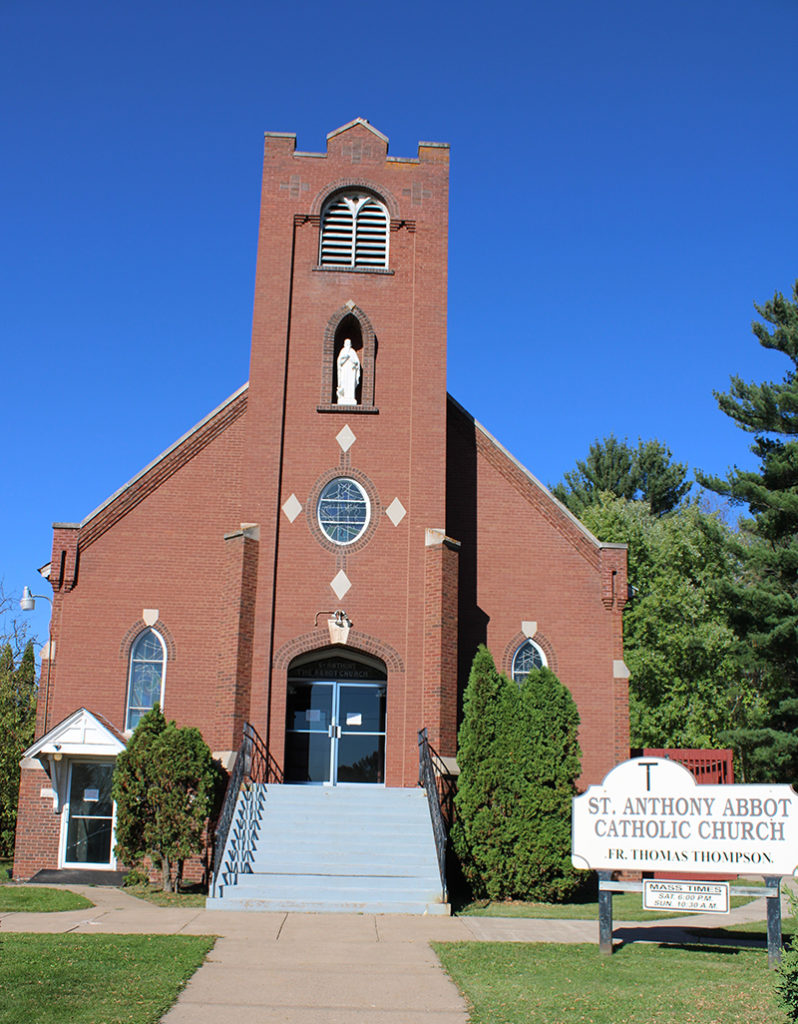
The parish of St. Anthony Abbot, Cumberland, has been housed in a historic brick church for nearly a century. Parish leaders have elected to demolish the building, which suffers from mechanical, electrical and water problems, and build a handicapped accessible church across the road. (Catholic Herald photos by Anita Draper)
Anita Draper
Catholic Herald staff
On Sunday, Oct. 17, the parishioners of St. Anthony the Abbot, Cumberland, gathered to bid farewell to their spiritual home for the past 99 years.
Their historic brick church was abruptly closed in early August, when it was determined to be unsafe following meetings between Bishop James P. Powers and the parish life coordinator, priests and clergy and members of the finance and building committee and parish council. Mass has been held in the parish center, located across the road, for the past couple months.
Information released to parishioners enumerated the church building’s faults, including water damage to walls and ceilings, mold and mildew, structural concerns, rot, falling ceiling plaster and tiles and continued mechanical and electrical issues.
Given the accessibility issues commonly associated with historic buildings – stairs at the entrance and difficulty accessing bathrooms, for starters – plus the likelihood that extensive repairs would require bringing the existing building up to code, parish leaders elected to demolish the old building and construct a new church by the parish center.
The new church will also provide more space and better use of space for events, parish leaders wrote in a note to parishioners, and the location by the parish hall will make it safer for religious education students to access their classrooms, as they will no longer have to cross a road to get there.
As the existing church was considered too unsafe to host a final Mass, the parish held a celebration of life outside on Sunday, Oct. 17. Approximately 100 people attended the Mass, which took place in the parking lot linking the church to the cemetery where generations of parish members have been laid to rest.
During his homily, Fr. Tom Thompson, pastor, spoke of the passage of time, the endurance of faith and sacraments – no matter where they physically take place – and the importance of celebrating the church’s blessings.
He asked for a show of hands: How many people received the sacraments here – baptism of themselves, baptism of their children, first Communions, funerals, anointing of the sick, etc.
The sacraments happened in the building, he acknowledged, but the sacraments “were for you.”
“Things of this world, they come and they go, sadly,” he added – despite that the building will be gone, the sacraments and memories cannot be taken away.
“This building has served us well for 99 years,” he commented, and observed that one person in the crowd was alive when the cornerstone was laid, as was one more parishioner in the local care home.
“The faith is still alive and well” in our hearts and communities, he said. Faith “cannot be knocked down.”
“God’s love is always with us, no matter where we are,” he added, no matter how we celebrate the Eucharist.
He ended the homily with a prayer, and the afternoon continued with a procession and Eucharistic adoration. Parishioners gathered for fellowship, refreshments and cake following the Mass.
